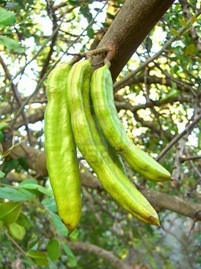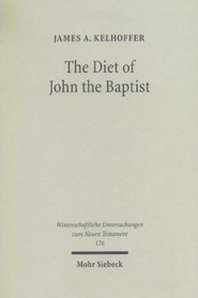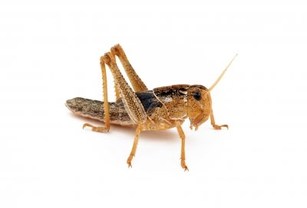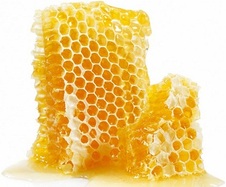Every source I studied agreed that wild honey was highly common. Some people believe it was honey made from bees, and others believe that it refers to the tree gum (a tasteless but nutritious liquid) from the tamarisk tree; but all agree to its being common. With that being said, I'll focus on the outlandish part, the locusts. The fact that Matthew pointed out only John the Baptist's choice of food suggests to me that it was indeed an atypical dish.

I expected most of my research to inform me that locusts were not a usual delicacy, so I was surprised to find that two sources say that it was completely normal. As part of the definition of "locust," my Vine's Concise Dictionary says that "they are used as food; the Arabs stew them with butter, after removing the head, legs and wings."
One source agrees with this. Apparently, one didn't simply pop the locust into his or her mouth. There was a method. After removing the wings and legs, the locust's head would be removed, allowing the guts and intestines to flow out, leaving only the skin of the locust to eat. He says that just as we would think nothing about eating a pig's or chicken's flesh, the people of that time didn't think twice about eating the skin of a locust. He also adds that in ancient Greece and Rome, fried locusts, cicadas, and grasshoppers were considered a delicacy superior to the best meat or fish. These insects have enormous nutritional value. Grasshoppers, for example, are 60% protein versus chicken or beef with about 20%.

So, there is not a unanimous conclusion to this question, but I like to side with those who say that it was common. Imagining people "stewing" over the preparation of the locusts is more intriguing than imagining them saying, "Ah! A locust! Peter, get the sandal and squish it!" Also, thinking about a decapitated locust with guts flowing out just spices things up.
Just for fun, I found this video of this strange boy reading Matthew 3:4 and eating a locust. Obviously, he doesn't know what he's doing, as he didn't properly remove the wings, legs, and head before consumption. Sheesh! Get it right.


 RSS Feed
RSS Feed